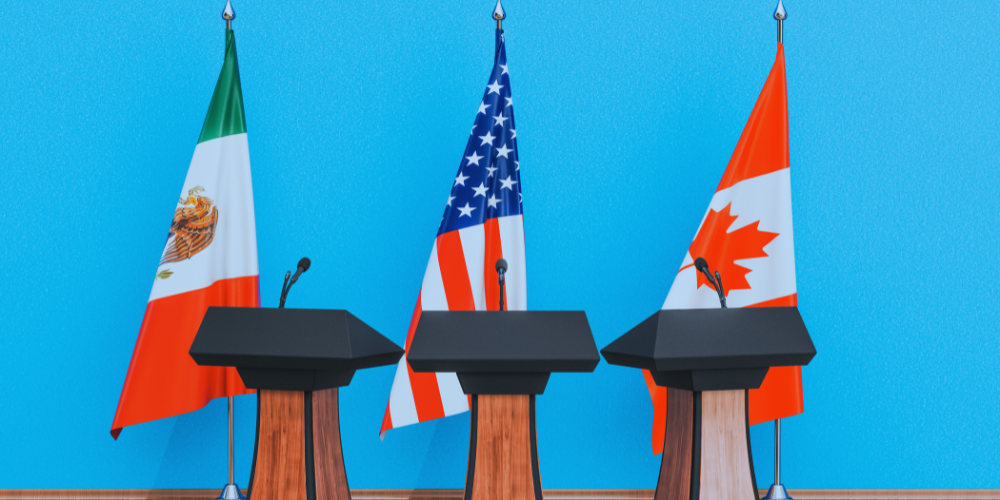
In an ever-globalizing world, trade agreements shape the economies and relationships between nations. One such crucial agreement is the United States-Mexico-Canada Agreement (USMCA). For travelers interested in the dynamics of North American trade and its implications, understanding the USMCA is essential. This guide provides a comprehensive look into the USMCA, its history, key provisions, and its impact on the relationships between the United States, Mexico, and Canada.
What is the USMCA Agreement?
The United States-Mexico-Canada Agreement, or USMCA, is a trade agreement between the United States, Mexico, and Canada. It came into effect on July 1, 2020, replacing the North American Free Trade Agreement (NAFTA). The USMCA aims to create a more balanced and reciprocal trade environment, enhancing economic ties and ensuring fair trade practices among the three nations. For travelers, this means improved economic stability and opportunities across North America.
Historical Context
Before the USMCA, there was NAFTA, which had been in place since 1994. While NAFTA significantly increased trade and economic integration among the three countries, it faced criticism for various reasons, including its impact on manufacturing jobs in the United States and insufficient labor and environmental protections. The transition from NAFTA to the USMCA was driven by the need to modernize the agreement to address these issues and reflect current economic realities. For travelers, understanding this transition helps in grasping the evolving economic landscape they are visiting.
What is the Trade Agreement Between Canada, the US, and Mexico?
The USMCA is a comprehensive trade agreement designed to regulate trade and investment between the three countries. Its primary goals include:
– Increasing Market Access for Goods and Services: This means reduced tariffs and more opportunities for cross-border shopping and business ventures for travelers.
– Enhancing Intellectual Property Protections: Innovations and products travelers enjoy are better protected.
– Promoting Fair Labor Practices: Ensures that the goods and services available are produced under fair working conditions.
– Strengthening Environmental Standards: Travelers can expect higher environmental standards and eco-friendly products and services.
– Streamlining Digital Trade and E-commerce Regulations: Facilitates smoother online transactions and digital services, benefiting travelers who shop or conduct business online.

Key Provisions of the USMCA
Trade in Goods and Services
The USMCA eliminates or reduces tariffs on various goods, making it easier for businesses to trade across borders. It also improves market access, allowing for more efficient and profitable exchanges of goods and services. For travelers, this can mean more affordable goods and a wider variety of products available when visiting different North American countries.
Rules of Origin
The agreement introduces stricter rules of origin, particularly for the automotive industry. This ensures that a higher percentage of a vehicle’s parts come from North America, promoting local manufacturing and job creation. Travelers will benefit from seeing more North American-made products, which often translate to higher quality and standards.
Intellectual Property
The USMCA enhances intellectual property protections, benefiting businesses and innovators by safeguarding patents, trademarks, and copyrights more effectively. Travelers can expect a more robust market for creative and technological products, knowing that these innovations are well-protected.
Labor and Environmental Standards
New labor and environmental commitments ensure that member countries adhere to fair labor practices and implement robust environmental protections. These provisions include mechanisms for enforcement and compliance, holding countries accountable. Travelers can feel good about supporting ethical and sustainable businesses during their travels.
What Three Countries are in USMCA?
The USMCA involves three countries:
1. The United States: Plays a crucial role in the agreement, focusing on creating jobs and boosting economic growth.
2. Mexico: Benefits from economic opportunities while facing challenges related to labor market adjustments.
3. Canada: Gains from enhanced trade relations and access to larger markets, despite some sector-specific drawbacks.
Understanding which countries are part of this agreement helps travelers appreciate the regional economic cooperation and stability.
Economic Impacts
Impact on the United States
The USMCA is expected to create jobs and stimulate economic growth, particularly in the automotive, agriculture, and manufacturing sectors. Travelers will notice enhanced infrastructure, improved services, and possibly lower costs for certain goods.
Impact on Mexico
While Mexico sees economic opportunities from increased trade, it also faces challenges in adjusting its labor market and ensuring compliance with new labor standards. Travelers can expect better wages and working conditions in Mexico, contributing to a more stable economy.
Impact on Canada
Canada benefits from improved trade relations and access to the larger US and Mexican markets. However, some sectors may face challenges due to increased competition and regulatory changes. Travelers may see a broader range of goods and services available, along with potential price adjustments.

How is the USMCA Impacting Relationships Between the US, Mexico, and Canada?
The USMCA strengthens economic ties and fosters cooperation on trade and regulatory issues. It addresses disputes more effectively, enhancing diplomatic relations. By creating a more balanced and fair trade environment, the agreement helps maintain strong partnerships among the three nations. For travelers, this translates to a more predictable and stable environment when crossing borders and engaging in economic activities.
Dispute Resolution Mechanisms
The USMCA introduces improved dispute resolution mechanisms compared to NAFTA. These include state-to-state dispute resolution and investor-state dispute settlement, providing clearer and more efficient ways to address trade conflicts. Travelers can have greater confidence in the stability and fairness of the markets they are engaging with.
Implementation and Compliance
The implementation of the USMCA involves various steps taken by the US, Mexico, and Canada to ensure compliance. The USMCA Free Trade Commission monitors adherence to the agreement, ensuring that all parties meet their commitments. Travelers can trust that these nations are working together to uphold high standards of trade and economic cooperation.
Criticisms and Controversies
Despite its benefits, the USMCA faces criticism from different stakeholders. Business groups, labor unions, and environmental organizations have raised concerns about specific provisions and potential impacts. Addressing these concerns remains an ongoing process. Travelers should stay informed about these debates to understand the full impact of the agreement on the regions they visit.
Future Prospects
The long-term implications of the USMCA for North American trade are significant. While the agreement brings many benefits, there are areas for further negotiation and improvement. The USMCA will continue to play a crucial role in shaping the global trade dynamics of the three nations. Travelers can expect continued enhancements in trade practices and economic relationships.
The United States-Mexico-Canada Agreement is a landmark trade deal that has reshaped the economic landscape of North America. Understanding its provisions and impacts is essential for anyone interested in the region’s trade dynamics. As travelers, being informed about such agreements helps us appreciate the complexities and benefits of international trade. Stay tuned for more insights and updates on trade and economic topics.

